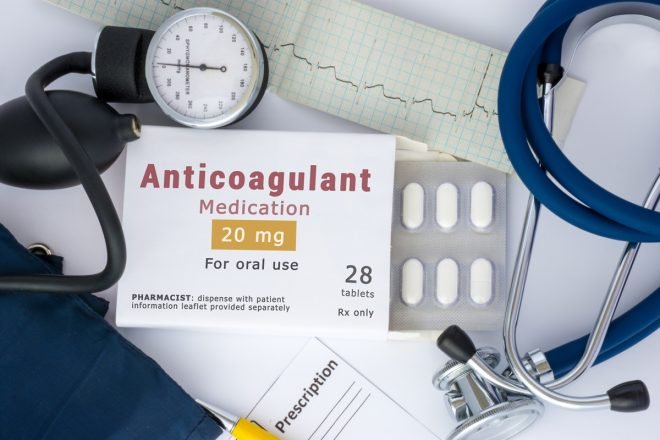Advertisment
Dual anticoagulant therapy ups bleeding significantly without clear therapeutic benefit

Article written by Bruce Sylvester.
Patients using direct oral anticoagulant (DOAC) for atrial fibrillation and/or venous thromboembolism (AF/VTE) and taking concomitant aspirin (ASA) increase their bleeding risk without a clear therapeutic benefit.
Researchers reported this finding on April 19, 2021 in JAMA Internal Medicine.
“In this registry-based cohort study, one-third of patients treated with DOACs were also taking ASA. Comparing 2 propensity score–matched groups of 1047 patients without a history of heart valve replacement or recent acute coronary syndrome, patients treated with combination therapy had significantly higher rates of bleeding and hospitalizations for bleeding; there was no observed difference in thrombosis rates,” the authors said.
Eligible subjects were adults undergoing treatment with a DOAC for AF or VTE, without a recent myocardial infarction (MI) or history of heart valve replacement, with at least 3 months of follow-up.
Endpoints included rates of bleeding (any, non-major, major), rates of thrombosis (stroke, VTE, MI), emergency department visits, hospitalizations, and death.
Of the 3280 subjects enrolled,1673 [51.0%] were men, with a mean age of 68.2 years. And of these 3280 subjects, 1107 (33.8%) were being treated with DOACs and ASA.
The investigators analyzed data on two matched cohorts, DOAC plus ASA and DOAC only, each with 1047 subjects. They tracked the subjects for a mean of 20.9 months.
They reported that subjects on combination DOAC and ASA had more bleeding events than those on DOAC monotherapy (31.6 bleeds vs 26.0 bleeds per 100 patient years, P = .01).
Subjects using combination therapy also had significantly higher rates of nonmajor bleeding (26.1 bleeds vs 21.7 bleeds per 100 patient years, P = .02) compared with DOAC monotherapy.
Major bleeding rates were similar between the two groups.
Thrombotic event rates were also similar (2.5 events vs 2.3 events per 100 patient years for subjects treated with DOAC and ASA compared with DOAC monotherapy, P = .80).
Hospitalization was higher for subjects undergoing combination therapy (9.1 vs 6.5 admissions per 100 patient years, P = .02). The authors concluded, “Nearly one-third of patients with AF and/or VTE who were treated with a DOAC received ASA without a clear indication. Compared with DOAC monotherapy, concurrent DOAC and ASA use was associated with increased bleeding and hospitalizations but similar observed thrombosis rate. Future research should identify and deprescribe ASA for patients when the risk exceeds the anticipated benefit.”





